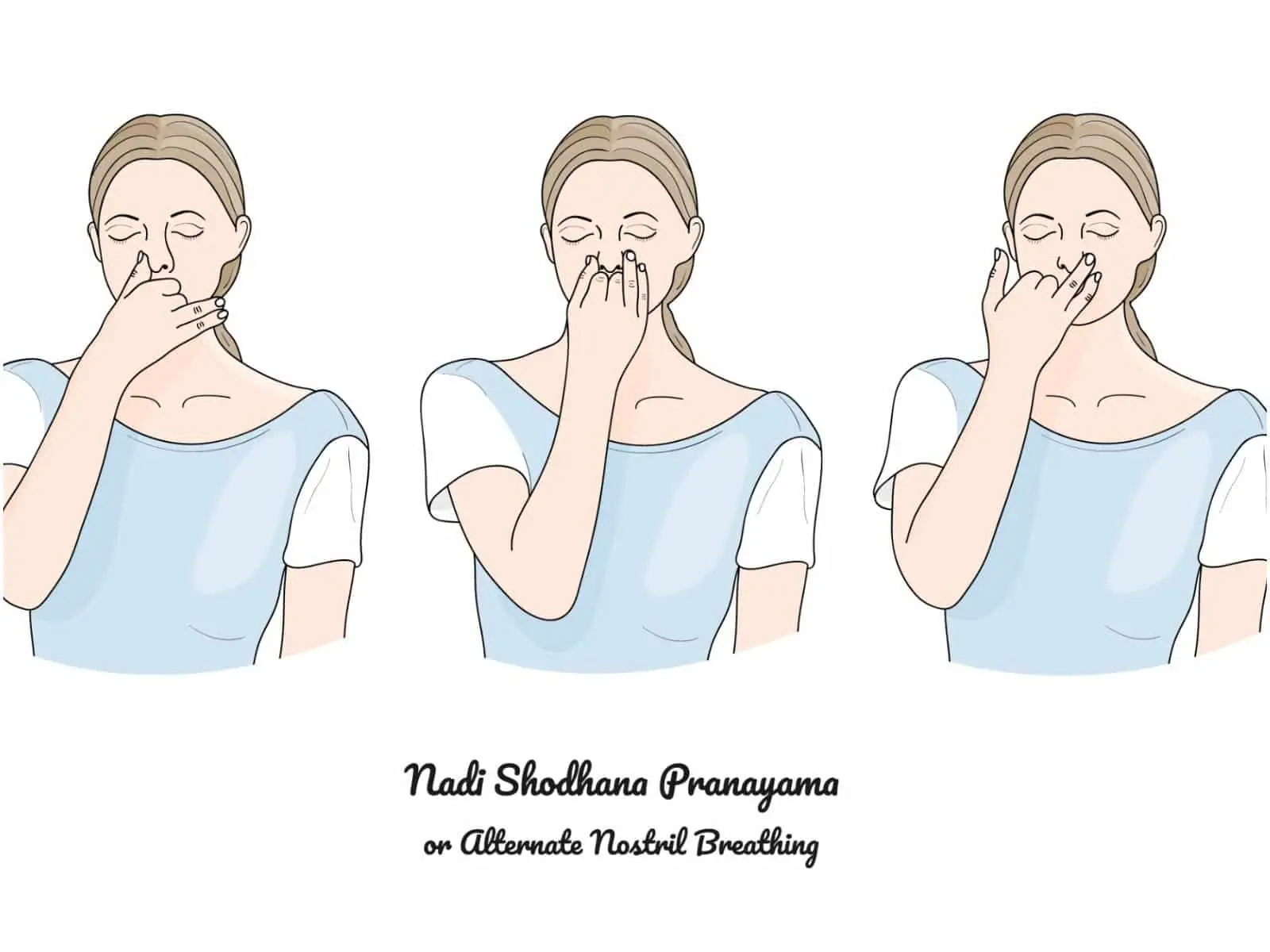Nadi Shodhan Pranayama – How to do & Benefits:
The breath and mind are interconnected. A steady breath means a calm mind, and a calm mind helps steady the breath.
Alternate nostril breathing, also known as Nadi Shodhana, is a powerful breathing exercise with wide-reaching health benefits.
The term Nadi Shodhana literally translates as “clearing the channels of circulation.”
Alternate nostril breathing, also known as Nadi Shodhana, is a powerful breathing exercise with wide-reaching health benefits. The term Nadi Shodhana literally translates as “clearing the channels of circulation.”
In yoga, it is considered that practicing this exercise will purify and cleanse the nadis, which will allow a smoother flow of “prana” throughout the mind, body, and spirit.
Prana refers to the essential subtle energy that underlies all reality. It has many levels of meaning, from the breath to the energy of consciousness itself.
According to the ancient yogic texts, we have a total of 72,000 channels or nadis that circulate throughout our body.
When our nadis are open and clean, the energy can flow smoothly, and we are healthy and energized.
This breathing exercise can be immensely rewarding, even when practiced for as little as five minutes on a regular basis, but practicing daily for 10-15 minutes offers even greater health benefits.
Benefits Of Practicing Alternate Nostril Breathing
- reduces anxiety and stress;
- improves your ability to focus the mind;
- normalizes diastolic and systolic blood pressure and sets them to reduced normal values. It also purifies the veins and arteries, through which the blood flows in the body;
- synchronizes the two hemispheres of the brain, which correlate to the emotional and logical sides of our personality;
- improves your ability to relax and rest. And if you meditate, this exercise is a great way to slow yourself down before you get started;
- helps to bring the mind back to the present moment;
- helps to balance hormones;
- practicing alternate nostril breathing each morning and evening can help remove stale air and other physical toxins from the bottom of your lungs;
- purifies the subtle energy channels of the body so that the prana can flow more easily;
- rejuvenates the nervous system;
- the ability to meditate is enhanced, allowing you to reach a higher level of spiritual awareness and understanding.
Nadi Shodhana Pranayama – Steps

UfaBizPhoto/Shutterstock
#1 Sit comfortably with your shoulders relaxed and spine erect (for example, sukhasana). Take a moment to get comfortable with a regular, steady breath. Your left hand is comfortably placed in your lap, and your right hand will close your nostrils alternating from left to right.
#2 Close your right nostril by pressing your nose gently with your right thumb and then inhale through your left nostril to a count of 4.
#3 Close your left nostril by gently pressing with your right ring finger and pinky finger into your nose; at the same time, remove your thumb from your right nostril and exhale through your right nostril to a count of 8.
#4 Repeat the breath, but this time, close your left nostril and inhale through your right to a count of 4, and then close your right nostril and exhale to a count of 8 through your left nostril.
When you first start using this breathing exercise, begin with just 1 or 2 rounds and gradually build up to around 10 rounds.
Always sit quietly for a few moments when you have finished. As you develop your breathing technique, try inhaling and exhaling for longer periods of time.
READ MORE: Breathing Techniques for Anxiety
Warning

dityazemli/Shutterstock
Those with high blood pressure should not hold their breath at any time during this practice.
People who have undergone heart surgeries, abdominal surgeries, brain surgeries should consult a healthcare specialist.
Also, some people get dizzy the first few times they try this breathing exercise.
READ MORE: Breathing Exercises To Lower High Blood Pressure
Tips
The early morning is an ideal time to practice this breathing exercise and is best practiced on an empty stomach, but if that does not suit your schedule, then choose a time that does and make it part of your daily practice.
Do not force your breathing, and keep the flow gentle and natural. While you perform the exercise, check the time you take to inhale and exhale.
Normally, your exhalation should be longer than your inhalation. For best results, nadi shodhana should be done before meditation.
Featured image credit – Shutterstock/ZephyrMedia
READ THIS NEXT: Hong-Sau Technique
